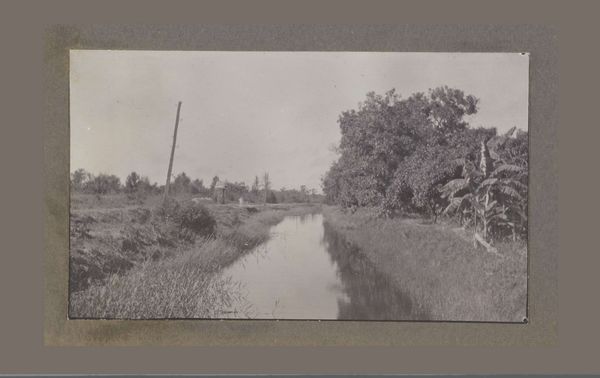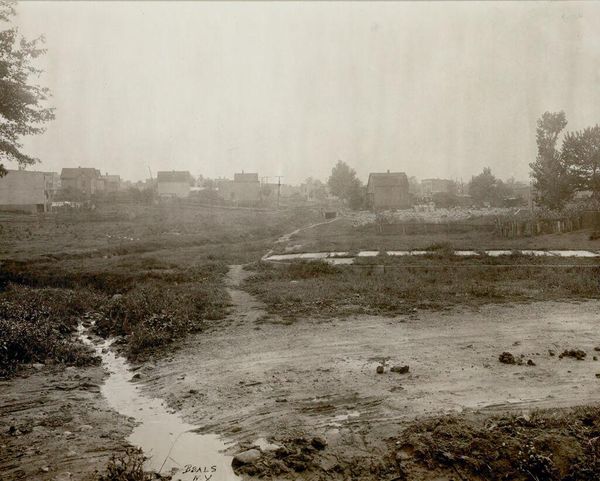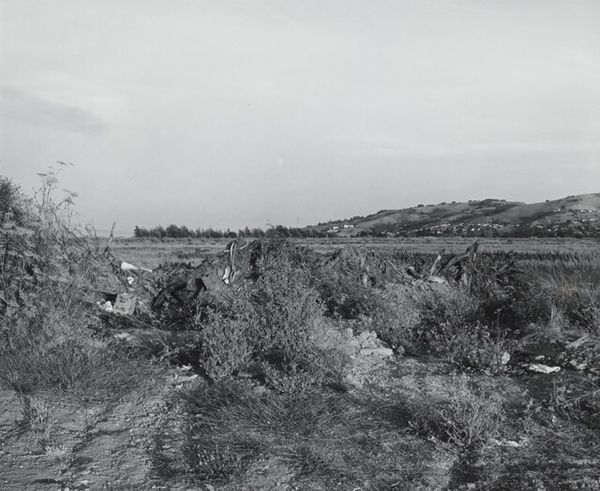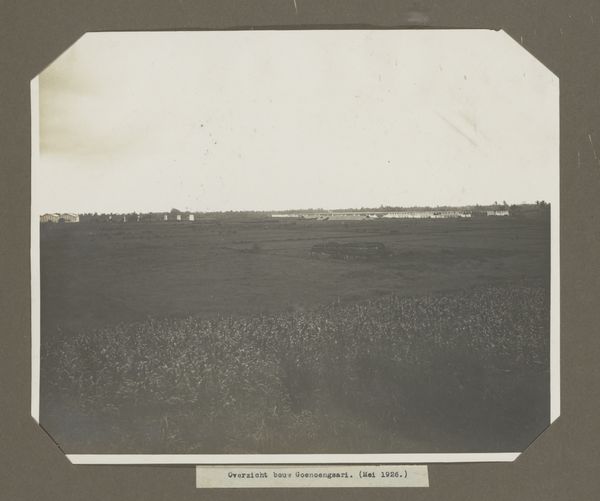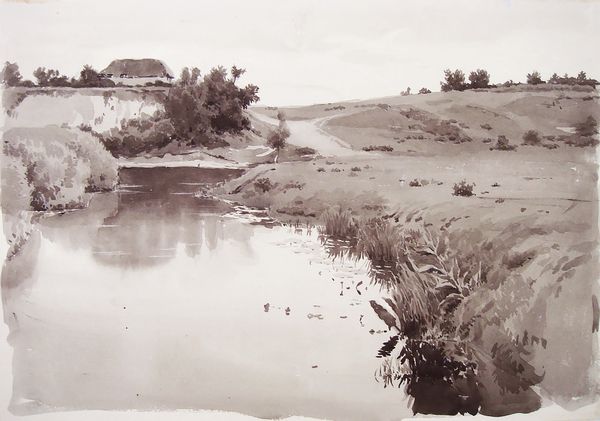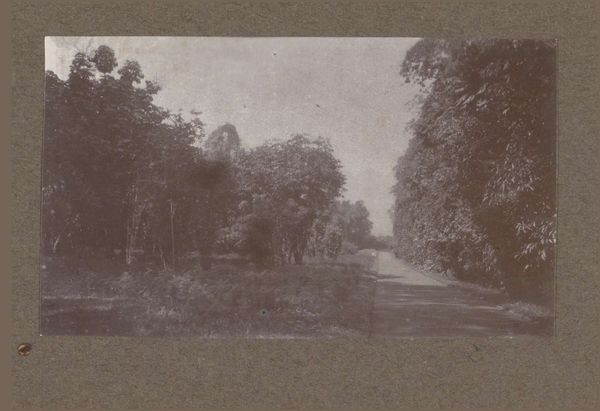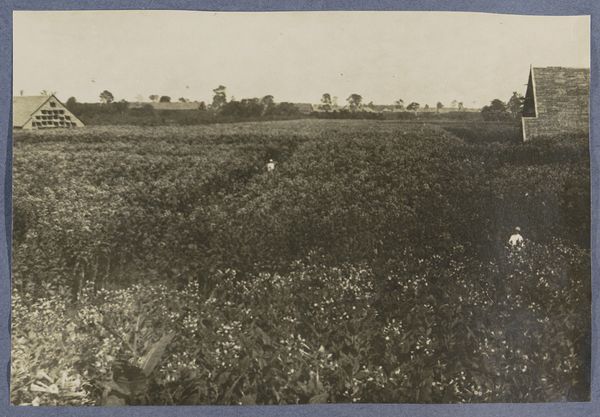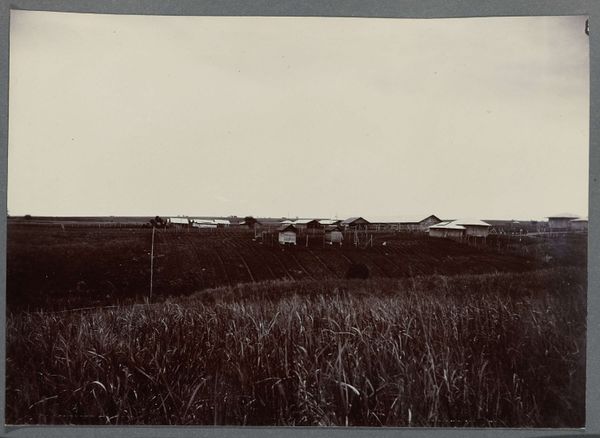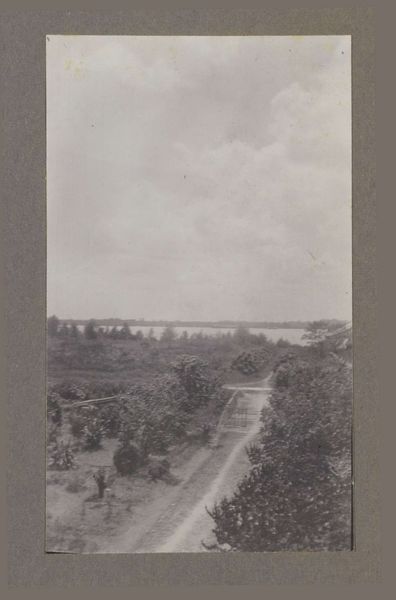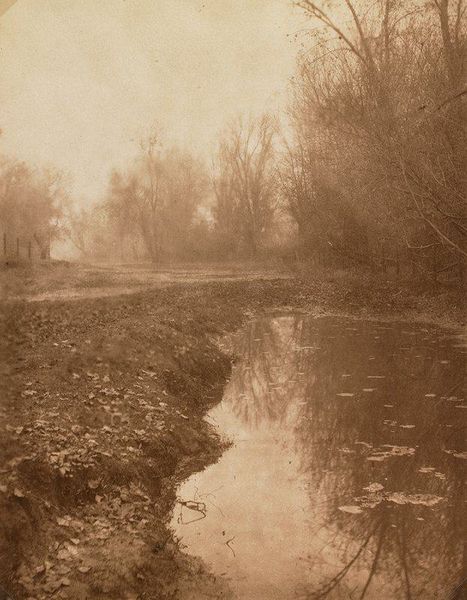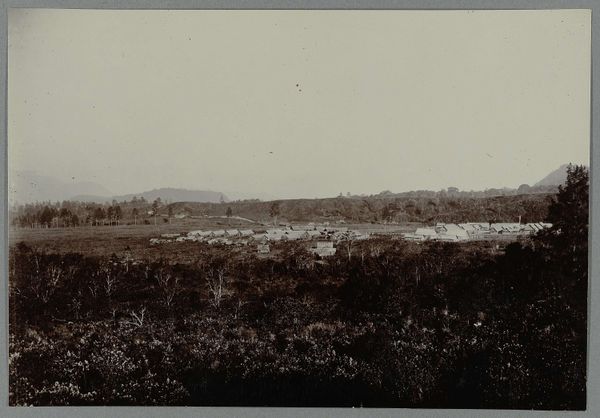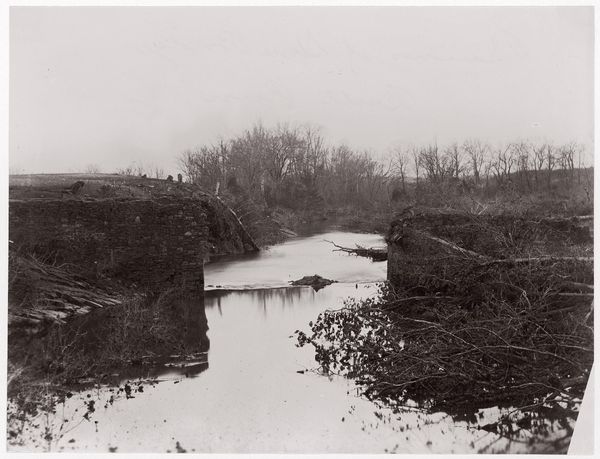
plein-air, paper, photography, gelatin-silver-print
#
impressionism
#
plein-air
#
landscape
#
charcoal drawing
#
paper
#
photography
#
gelatin-silver-print
#
fog
#
united-states
#
charcoal
#
mist
Dimensions: 7 3/8 x 9 1/8 in. (18.73 x 23.18 cm) (image)11 x 13 15/16 in. (27.94 x 35.4 cm) (mount)
Copyright: No Copyright - United States
Curator: Welcome, let’s discuss this work, "November," an evocative piece by William B. Post created in the late 19th or early 20th century. The piece is rendered in gelatin silver print on paper. Editor: Oh, hello there. Looking at it, I instantly feel that hazy melancholia, the chill that nips at your face as you walk through a field on a late autumn afternoon. It's almost photographic, but more ghostly. Curator: Precisely, the photographic element comes through strongly in its composition and materiality. Post was working during a time when the mechanical reproducibility of photography began influencing how painters approached plein-air landscape work. Consider how the artist uses a photographic process to capture the transient qualities of light and atmosphere that are usually the realm of painting. Editor: It’s as if he’s chasing a memory, trying to capture something just beyond reach. Do you think the choice of gelatin silver print helped to evoke this atmosphere? Curator: Absolutely. The gelatin silver printing process allows for rich tonal ranges, which accentuates the soft gradations of light and shadow we see here. Post also probably carefully considered his choice of paper, with different papers allowing for different effects. Also, photography in general democratized image production, inviting a new audience to engage with art as a product and experience. Editor: Looking closely, the mist seems to obscure what might be further in the distance. Is this meant to conceal, or perhaps to invite speculation? I think of ghost stories I would hear when I was growing up. Curator: Fog and mist are a device of Romanticism but here the means of production brings into focus questions about labor, capital and access to the means of art making. Instead of painting the image, he photographs it. Editor: It almost seems like a photograph *of* a drawing; its softness makes it so ambiguous, doesn’t it? What was he *saying* about America’s shifting agricultural landscape? Curator: We can assume Post had awareness about that conversation as he engaged in his artmaking, but how it comes across today probably speaks more about contemporary questions. "November" provides the occasion for viewers now to investigate not just Post's individual artistic sensibility but to also meditate on questions about access, artistic value, labor, and who gets to decide. Editor: Interesting! Thinking of it this way enriches my engagement with this picture even more, bringing this sense of place and time alive! Curator: Indeed. Understanding how Post harnessed photographic tools gives us valuable insights into how artwork's purpose and our perception of the visual landscape can change, and how making choices impacts culture!
Comments
No comments
Be the first to comment and join the conversation on the ultimate creative platform.
